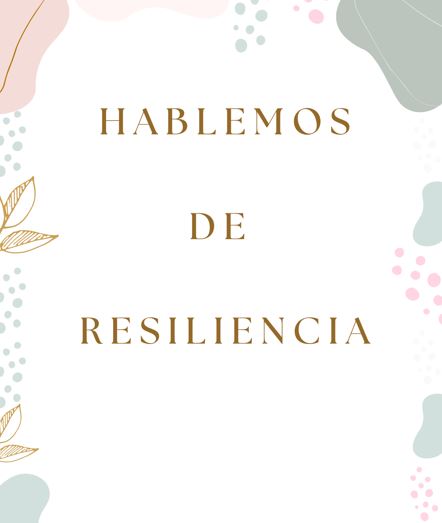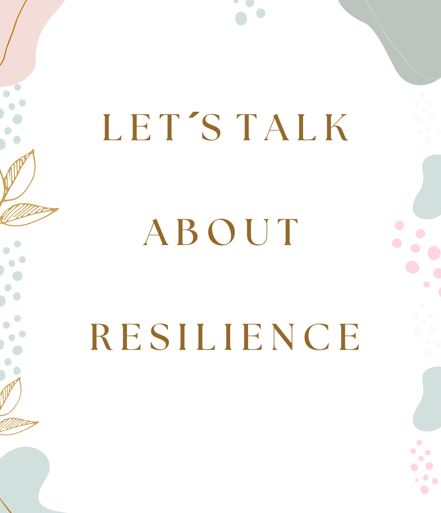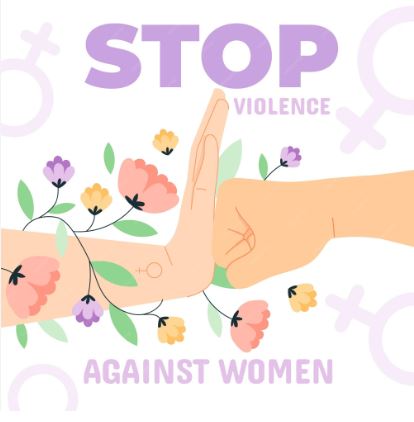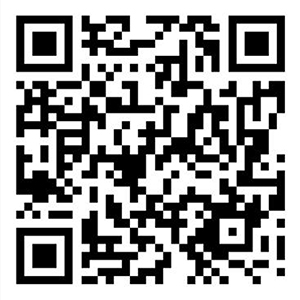Resiliencia que fomenta creatividad e innovación en el trabajo. Resilience that encourages innovation & creativity at work.
Todos estamos en gran medida de acuerdo con lo que el término resiliencia significa: la capacidad de recuperarse de la adversidad, enfrentar desafíos y adaptarse a los cambios. También muchos coincidimos en lo que implica ser una persona resiliente, que podría resumirse en alguien que sabe mantener su mentalidad y su actitud positivas a pesar de los obstáculos y/o experiencias no agradables, y continuar su crecimiento por encima de ellos.
No obstante, al hablar de resiliencia, se omite mencionar que este término suele mal interpretarse dentro de las organizaciones.
Me refiero a que existe una creencia creciente y real que vincula a una persona resiliente con alguien “dispuesto a tolerar” cualquier situación de abuso (verbal, no verbal o ambas), o tipo de violencia laboral (explícita, implícita o ambas).
Esta situación no puede estar más alejada de la verdad, ya que un individuo resiliente no es quien “soporta cualquier cosa o situación”, sino todo lo contrario: es un ser que, habiendo atravesado dificultades, muchas veces durísimas, entre otras capacidades aprendidas, conserva la de hacer frente a todos los desafíos que se presenten sin perder la calma, con dignidad y la convicción de que no está dispuesto/a a tolerar abusos de poder o situaciones de violencia de ninguna naturaleza.
Hecha esta aclaración, la realidad continúa mostrando en las empresas altos índices de desidia en contemplar e incluir resiliencia como valor en sus culturas organizacionales.
Esto se debe en gran parte a la ceguera de sus líderes en tomar en cuenta la ingeniería en reversa del problema: no hay forma de iniciar un proceso de innovación, y mucho menos de creación, a menos que, entre otras cuestiones:
- Se establezcan mecanismos de gestión concretos y medibles sobre la mejora en la comunicación dentro de todo el entramado social de la empresa.
- Se verifique si efectivamente la organización demuestra con los hechos que su cultura es diversa e inclusiva, o si se queda en enunciados de “buena intención”.
- Se realicen chequeos periódicos de salud mental con especialistas, en particular entre quienes tienen personal a su cargo.
- Se eduque permanentemente al personal, comenzando por el ejecutivo, en la importancia y enormes beneficios de saber cómo funciona básicamente nuestro cerebro y cuáles son los orígenes orgánicos de una gestión pobre en inteligencia emocional.
- Se revise la cultura organizacional cada tanto, y de ser preciso, se tomen decisiones respecto de realizar las mejoras y/o cambios necesarios.
Si bien este es un plan relativamente simple, no por ello es fácil de implementar. Porque en general las empresas – salvo excepciones – continúan aletargadas en materia de tomar consciencia de los problemas que pueden estar obstruyendo el nivel de creatividad e innovación de los individuos que la componen.
Por lo tanto, aquellos líderes que realmente lo consideren y lo pongan en práctica fomentarán la resiliencia en sus grupos y tendrán una ventaja competitiva que distinguirá su gestión al nivel de excelencia.
English version:
We all largely agree on what the term resilience means: the ability to recover from adversity, face challenges, and adapt to changes. Many of us also agree on what it means to be resilient, which could be summarized as someone who knows how to maintain a positive mindset and attitude despite obstacles and/or unpleasant experiences, and continues to grow in spite of them. However, when talking about resilience, it is often omitted that this term is somewhat misunderstood within organizations.
I refer to the growing belief that links a resilient person with someone ‘willing to tolerate’ any situation of abuse (verbal, non-verbal, or both), or any type of workplace violence (explicit, implicit, or both). This situation could not be further from the truth since someone resilient is not one who ‘endures anything or any situation’, but quite the opposite: it is them who, having faced difficulties – often very harsh ones – were able to develop among other abilities, the one that allows them to face all challenges without losing calmness, with dignity, and the conviction that they are not willing to tolerate abuses of power or situations of violence of any nature.
That being said, reality continues to show high levels of neglect in companies to consider and include resilience as a value in their organizational cultures. This is largely due to the blindness of their leaders in taking into account the reverse engineering of the problem: there is no way to initiate a process of innovation, much less of creation, unless, among other things:
a) Concrete and measurable management mechanisms are established for improving communication throughout the whole social fabric of the company.
b) It is verified whether the organization effectively demonstrates through actions that its culture is diverse and inclusive, or if it remains in simple statements of ‘good intention’.
d) Executives and staff are continuously educated on the importance and enormous benefits of understanding how our brain works and the organic origins of poor emotional intelligence management.
e) The organizational culture is reviewed from time to time, and if necessary, decisions are made regarding the appropriate improvements and/or changes.
While this is a relatively simple plan, it is not easy to implement. Because in general, companies – with some exceptions – continue to be sluggish in becoming aware of the problems that may be obstructing the level of creativity and innovation of all the members of their stuff.
Therefore, those leaders who truly consider it and put it into practice will encourage resilience in their groups and will have a competitive advantage that will distinguish their management to the level of excellence.
Mónica M. Arias
Excellence Communication Consulting
NeuroCoaching – Creative Oratory
Buenos Aires – Argentina







